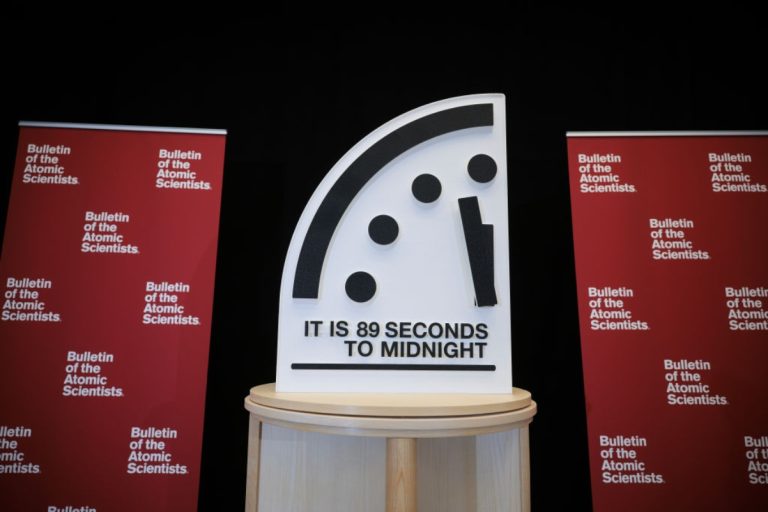Ticking Closer to Midnight: Doomsday Clock Moves to 89 Seconds, Underscoring Global Threats
January 28, 2025 — The symbolic Doomsday Clock, a measure of humanity’s proximity to self-annihilation, has been moved to 89 seconds to midnight, the closest it has ever been to the metaphorical "zero hour." This adjustment, announced by the Bulletin of the Atomic Scientists, reflects the organization’s assessment of growing global threats, primarily nuclear war and climate change. The clock serves as a stark reminder of the precarious state of the world and the urgent need for international cooperation to address these existential risks.
The Doomsday Clock, established in 1947, isn’t a physical timepiece but rather a symbolic representation of the world’s vulnerability to catastrophe. It functions as a conversation starter, prompting discussions about the dangers facing humanity and encouraging action to mitigate those risks. While not a precise scientific instrument, the clock’s movements are based on the expert judgment of the Bulletin’s Science and Security Board, which considers a range of factors, including nuclear proliferation, climate change, biosecurity risks, and disruptive technologies.
The latest one-second shift towards midnight reflects a worsening global landscape, marked by heightened tensions and insufficient progress in addressing critical challenges. The ongoing war in Ukraine, the resurgence of great power competition, and the escalating climate crisis all contribute to a sense of urgency. The Bulletin emphasizes that these threats are interconnected and exacerbate one another, creating a complex and dangerous web of global instability.
The Bulletin’s decision to move the clock closer to midnight underscores the growing concern within the scientific community about the trajectory of global affairs. The organization highlights the lack of sufficient progress on nuclear arms control, the continued reliance on fossil fuels, and the rise of misinformation and disinformation as contributing factors to the increasing risk of global catastrophe. These factors, they argue, create a volatile environment ripe for miscalculation and escalation.
The organization’s focus on misinformation as a "potent threat multiplier" reflects the increasing awareness of its role in exacerbating societal divisions and undermining trust in institutions. The spread of false and misleading information, often amplified by social media, can fuel conflict, undermine public health efforts, and erode the foundations of democracy. This, in turn, can hinder efforts to address complex global challenges like climate change and nuclear proliferation.
While the Doomsday Clock’s symbolic nature might lead some to dismiss it as mere theatrics, its consistent message of urgency warrants serious consideration. The clock serves as a poignant reminder of the shared responsibility humanity has to protect the planet and future generations. The Bulletin’s hope is that the clock’s movement will galvanize action, spurring governments, organizations, and individuals to work together to address the existential threats facing humanity. The 89-second warning is a call to action, urging collective effort to reverse course and build a more secure and sustainable future. The clock is ticking, and the time for complacency is long past.


